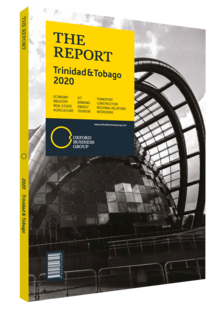Allen Chastanet, Prime Minister of St Lucia: Interview

Interview: Allen Chastanet
How important are ties to the Commonwealth, and how will relationships develop in the future?
ALLEN CHASTANET: The Commonwealth offers tremendous opportunities for St Lucia and Trinidad and Tobago. We hope the UK will now re-engage with the Commonwealth as a result of Brexit. From better trade agreements to enhanced double taxation treaties, we are confident that UK businesses will start looking at the Caribbean for growth opportunities, particularly as a way of entry into the Americas. Our countries share common law, the Privy Council, a common history and, of course, the same language.
Where are the key areas of economic collaboration connecting St Lucia and T&T?
CHASTANET: As members countries working together under the CARICOM Single Market and Economy trade and services agreement, our goal is to build a cohesive region that plays to one another’s strengths equally. T&T’s low energy costs and the sheer size of its economy make it ideal for both manufacturing and industry. The country also has advantages in financial services and tourism.
Our objective is to equip global businesspeople with a diversified portfolio and to circulate the notion that doing business in one CARICOM country means doing business in all CARICOM countries. For companies that conduct business in a CARICOM country, their ledgers only show one profit and loss (P&L) statement; however, within that P&L record there are seven different currencies, regulators and central banks. The financial world is beginning to see the Caribbean as a whole, and certain integrations will deepen our bonds. For example, maintenance and compliance among banking institutions offer significant benefits. The fruits of this labour are already evident thanks to T&T’s strong financial sector, which is now diversifying within CARICOM. Republic Bank’s acquisition of Scotiabank’s assets in the region makes clear the importance of this diversification. Indeed, integration will take place at a faster pace when the private sector takes the lead.
The great advantage of the Eastern Caribbean is having a strong dollar backed by reserves. There are no foreign exchange controls. As a dynamic and competitive country for tourism, St Lucia is constantly adding to its foreign reserves. Businesses in St Lucia, therefore, complement and diversify Trinbagonian businesses’ portfolios, particularly relevant given foreign exchange challenges in T&T.
What opportunities exist for multi-destination tourism and collaboration?
CHASTANET: In order to effectively target Asian visitors or those coming from even further afield, we must create and consolidate multi-island packages. Whether that means tourists flying to one destination and boarding a cruise ship, or simply the ability to visit multiple destinations in an efficient manner, there is a strong regional appetite for collaboration.
The key is to improve the ease of doing business and truly live up to the potential of the tourism industry. Ask an American to close their eyes and imagine where they would like to be on vacation and they will likely picture the Caribbean, and yet only 4.5% of Americans holiday here. The Caribbean represents just 1.5% of the global tourism market, which is one of the fastest-growing markets in the world. Whereas in St Lucia we receive some 180,000 American arrivals per year, Jamaica receives more than 750,000 visitors from the Tri-state area alone. Within the Caribbean, there is tremendous opportunity for growth, especially given that we currently receive virtually no business from Latin America.
By improving access via air travel and implementing a singular visa for the Caribbean, much like the region did for the 2007 Cricket World Cup, we will see increased arrivals and a more robust tourism sector.
You have reached the limit of premium articles you can view for free.
Choose from the options below to purchase print or digital editions of our Reports. You can also purchase a website subscription giving you unlimited access to all of our Reports online for 12 months.
If you have already purchased this Report or have a website subscription, please login to continue.

